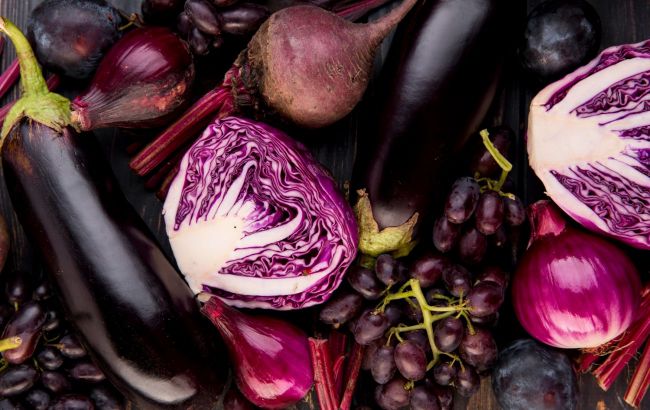Nutritionist unveils importance of purple produce in your diet
 What are the benefits of purple vegetables and fruits (illustrative photo: Freepik)
What are the benefits of purple vegetables and fruits (illustrative photo: Freepik)
For the normal functioning of the body, anthocyanins are crucial, and when combined with other phytonutrients, they protect cells from damage. There is a rich presence of these compounds in purple-colored foods such as plums, grapes, cabbage, and beets. Dietitian Oleg Shvets reports on the purple foods worth incorporating into your diet in his publication on Facebook.
Benefits of purple-colored foods
"Berries, fruits, and vegetables with a purple hue typically stand out for their high content of beneficial nutrients known as anthocyanins. Like several other phytonutrients, they assist in protecting cells from damage that could lead to illnesses," says the doctor.
Anthocyanins work in conjunction with other plant nutrients, ensuring the optimal functioning of the body.
Shvets shares a list of beneficial purple-colored vegetables and fruits.
Plums
The more intense the color, the higher the anthocyanin content. Ripe fruits also contain more beneficial nutrients. The skin of plums can have up to 20 times more antioxidants than the flesh.
Berries
"While anthocyanins are associated with the purple color, pigments in berries can range from red to blue. Among them are blueberries, blackberries, strawberries, raspberries, black currants, and mulberries. According to research, in both children and adults consuming blueberries, these berries can improve cognitive function and elevate mood," says Shvets.
Researchers are exploring the hypothesis of the impact of anthocyanins as specific communicators between brain cells.
Potatoes
This vegetable provides potassium, magnesium, vitamin C, and dietary fiber. Varieties with purple skin and flesh contain two to three times more antioxidants than regular white potatoes.
Cherries
The anthocyanins giving them a rich dark color help reduce blood pressure and maintain healthy blood vessels. They are also beneficial for joint issues like osteoarthritis and gout. Additionally, cherries contain numerous nutrients that help prevent cancer, heart disease, and diabetes.
Grapes
"The anthocyanins in grapes can range from red to black colors. Resveratrol, known for its powerful antioxidant properties, has drawn the attention of scientists. It is present in the grape's skin, giving red wine its color," explains the dietitian.
Cauliflower
The purple color is typically attributed to just one gene in this otherwise white vegetable, responsible for a higher anthocyanin content. Additionally, cauliflower is rich in other phytonutrients, vitamin C, and minerals. To preserve maximum nutrients, steam or eat it raw.
Red Cabbage
Fermented cabbage may make it easier for the body to utilize anthocyanins. Fermentation produces natural probiotics that nourish the gut microbiota, supporting the body's defense against adverse factors, aiding nutrient absorption, digestion, and even anxiety control.
Beets
"The color of this traditional Ukrainian vegetable comes from various antioxidants called betalains. These red and yellow pigments are found in the stems of chard and rhubarb, as well as in some mushrooms. They break down more easily under high temperatures than anthocyanins, so try steaming beets. These vegetables are beneficial for heart and brain health and help stabilize blood sugar levels," says Shvets.
This material is for informational purposes only and should not be used for medical diagnosis or self-treatment. Our goal is to provide readers with accurate information about symptoms, causes, and methods of detecting diseases. RBС-Ukraine is not responsible for any diagnoses that readers may make based on materials from the resource. We do not recommend self-treatment and advise consulting a doctor in case of any health concerns.

